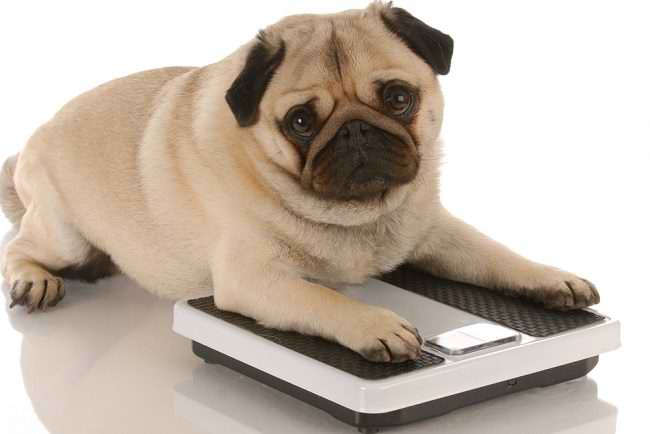Recognize the characteristics of obesity in dogs and the various health risks that lurk
Fat dogs do look more adorable. In fact, it can be a sign of obesity in dogs. If left unchecked, obesity can endanger the health of your beloved dog. Therefore, it is important to know the preventive measures.
Obesity is a condition when the body has excess fat tissue, so that body weight increases well above the normal range. Not only in humans, this condition can also occur in pets, including dogs.
The ideal weight for small dogs like Pomeranians, Terriers and Beagles, as opposed to large dogs like Golden Retriever, Labrador Retriever, and Saint Bernard.
In addition, several other factors such as overeating, lack of movement, a history of neutering, and certain diseases can also cause your dog to become obese.
Features of Obesity in Dogs
A dog can be said to be obese when its body weight is 10–20% above its ideal body weight range. Here are the signs of obesity in dogs that you can see or feel:
1. Lazy to move and easily tired
The most common signs of obesity in dogs are difficulty walking and panting easily when invited to activities. This is because their bodies are too fat to make them lazy, don't even want to move.2. Oval body shape
One simple way to determine if your dog is obese or not is to look at his body shape. If you see your dog's body shape from above is oval and slightly chubby, it could be that they are obese.
3. Ribs are not felt to the touch
Obesity dogs tend to have hard ribs to feel because too much fat gets in the way. However, if you can feel the ribs easily, your pet dog is still relatively healthy.
4. Excessive weight gain
Another way to tell if your dog is obese is excessive weight gain. This causes them to have fat deposits that sag on their legs, neck and hips, and appear to wobble when they walk.In addition to the above characteristics, obese dogs also show other characteristics, such as a loose stomach, difficulty climbing stairs, and a reluctance to exercise or engage in activities. An obese dog may also find it difficult or long to get up from a lying position.
Risk of Obesity in Dogs
Fat dogs may look cute, but this can have a negative impact on their health. In general, obesity can put dogs at higher risk for several conditions or diseases, including:
- Diabetes, because the body has insulin resistance
- Heart disease, due to the accumulation of fat in the heart
- Arthritis, due to heavy body weight puts excessive pressure on joints and bones
- Breathing problems, due to swelling and narrowing of the airways
Obesity can also make a dog more at risk for pelvic dysplasia. This abnormality in the pelvis can make the dog painful and difficult to sit, walk, or even move.
In addition, obese dogs are also at risk of developing various types of cancer and reducing their quality of life and shortening their lifespan.
Tips to Prevent Obesity in Dogs
There are several things that can be done to prevent dogs from becoming obese, namely:
1. Portion control
Obesity in dogs can actually be prevented from the start by controlling the portion of your pet's food. Instead, feed them according to the recommended amount and don't overdo it.
2. Providing healthy snacks
You should also provide nutritious and healthy snacks for your beloved dog. Try not to get used to giving him snacks for humans, such as cakes, biscuits, ice cream, candy, or junk food, because these foods are high in calories, fat, and sugar.3. Get him moving every day
In addition, encourage your dog to stay active by walking him every day. Taking him for a walk can also prevent your dog from feeling stressed and bored. Regular movement and activity is also important to burn calories in his body, so your dog can lose weight.4. Check his condition to the vet regularly
So that your dog's weight is under control, you also need to take him regularly to the doctor for regular weight and health checks. If your dog is overweight, the doctor will start recommending improved diet and regular physical activity for your dog.
Those are some of the characteristics of obesity in dogs along with the health risks that lurk.
If you have questions about the appropriate portion of food for your dog's breed and age or even want to know about various ways to treat obesity in dogs and their prevention, don't hesitate to consult a veterinarian.
Label :
Comments
Post a Comment